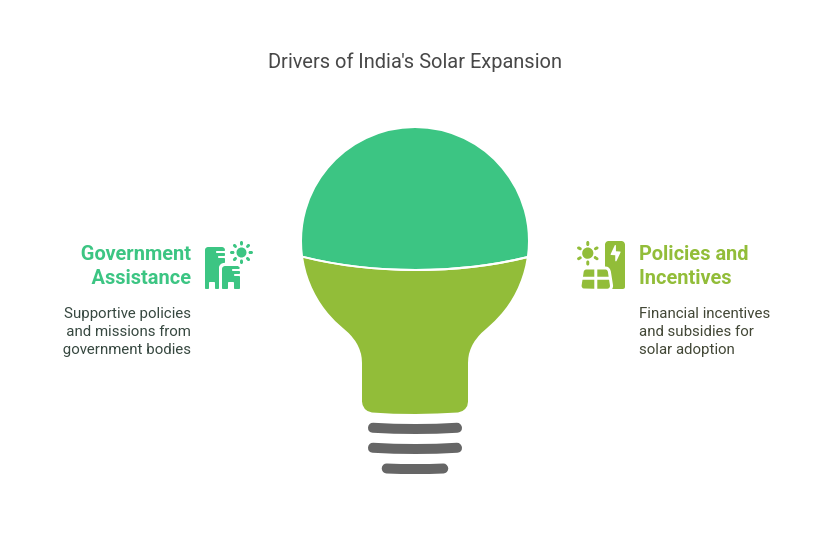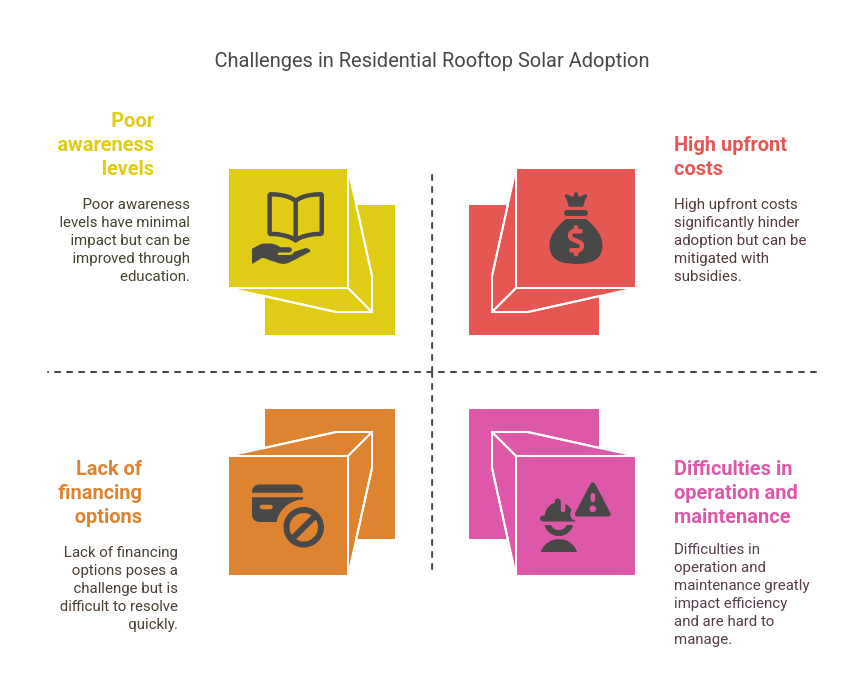After years of conceptualization, the rooftop solar power sector of India is now all set to drive action. In the window of six months till May 2023, more than 1000 MW capacity of rooftop solar power has been added, which is a remarkable figure. This proves the upward rise of the rooftop solar manufacturing sector.
India is now successfully the global leader in the renewable energy industry. Not just in 2023, but in the past few years, the installation of solar panels over the roof has experienced immense growth and revolution. Hartek Group has been at the forefront of this transformation, driving innovation and delivering cutting-edge solar solutions. Following that, modern ways are now being used in order to generate or consume energy.
In this article, you shall get a clear insight into several factors that explain the expansion of the rooftop solar industry in India and how manufacturers are putting in efforts to drive global growth around it.
How India Became the Most Affordable Solar Power Producer?
Across the globe, renewable energy is considered the technology for promoting new capacity of power generation. Solar power production in India is now the lowest cost in the world, reflecting a substantial shift towards the use of renewable energy that is boosting the energy transformation sector globally.
Rooftop solar panel manufacturers in India have figured out that it is quite cheaper to build or run solar farms than to run coal-fired plants. The benefits associated with the use of renewable energy are also profound, which is one of the biggest motivators for India and the world to continue the trend of using it.
The carbon emission reduction goals are to be met with this initiative, creating a barrier against climate change. India, being a thriving economy, will definitely see increased consumption of power in the future. Therefore, the country is now inclined towards investing in developing alternative energy forms to create a proper balance between sustainability in the environment and support needed for economic growth.
Knowing this, the Government of India encouraged the idea of introducing solar power in 2010. And that helped the industry boom impeccably in a very short time window. Thus, India holds the title of being the cheapest solar energy producer. In the year 2010, the overall installed capacity of solar power was a mere 10 MW, and by 2016, the total installed solar power capacity was 6000 MW.
But, as of 2023, achieving a 1000MW installation took just 6 months time. These numbers are evidence of how focused India is towards encouraging rooftop solar power installations. This has been made possible by the positive responses from all the rooftop solar panel manufacturers, contributing to the whopping growth of this sector on a global scale.
What’s Driving Indian Rooftop Solar Panel Manufacturers’ Global Expansion?
Some of the factors that have helped the Indian rooftop solar panel manufacturers contribute to the growth & expansion of the industry on a global scale are:
1. Government’s Assistance
Indian Government bodies, such as MNRE (Ministry of New and Renewable Energy) and SECI (Solar Energy Corporation of India), have played a role in helping India grow exponentially in the solar energy sector.
Aggressive targets were set, and policy implementations were encouraged for the rooftop solar manufacturers to put in considerable effort. Various missions were launched by the Central Government to promote the faster adoption of solar power, and even the state governments came in to support this accelerated growth.
2. Policies and Incentives
The incentives and subsidies issued by the Government since the introduction of this technology in the nation in 2010 have been considered instrumental for the manufacturers and consumers to adopt the use of solar energy.
Since then, the top segments in the solar power industry that have seen immense growth include open-access solar farms, utility-scale, and rooftop solar plants. To boost the growth of this sector, the Government also permitted excise duty and customs duty benefits.
Conclusion
There is no doubt about how important energy storage will be in the forthcoming times, and the Indian solar market will continue to be the cheapest power producer, irrespective of all the challenges. The manufacturers and energy providers are working tirelessly to remove all the bottlenecks at state, national, and even global levels.
To explore reliable solar solutions, contact Hartek Group – your trusted partner in renewable energy.
HARTEK, being one of the top 3 manufacturers of Rooftop solar panels, has been making it possible for people to install and leverage solar power, even in the most remote areas or locations. We have the best technicians and engineers onboard to ensure quality solar installations on priority. To know more, connect with us right away!
FAQ’s:-
1. What makes India a global leader in rooftop solar panels?
India leads due to affordable production costs, government support, and rapid capacity expansion, making it a top rooftop solar panel manufacturer.
2. Why is solar power in India cheaper than coal power?
Solar farms are more cost-effective to build and run than coal plants, reducing overall energy costs and promoting sustainable power generation.
3. How has the Indian government supported rooftop solar growth?
The Indian government offers subsidies, tax incentives, and policy support, boosting rooftop solar panel manufacturing and adoption.
4. What are the benefits of rooftop solar power?
Rooftop solar reduces electricity bills, lowers carbon footprints, and promotes energy independence with sustainable power generation.
5. Why choose Hartek Group for rooftop solar installation?
Hartek Group offers expert rooftop solar panel installation with top-quality equipment, ensuring reliable and efficient solar solutions.




